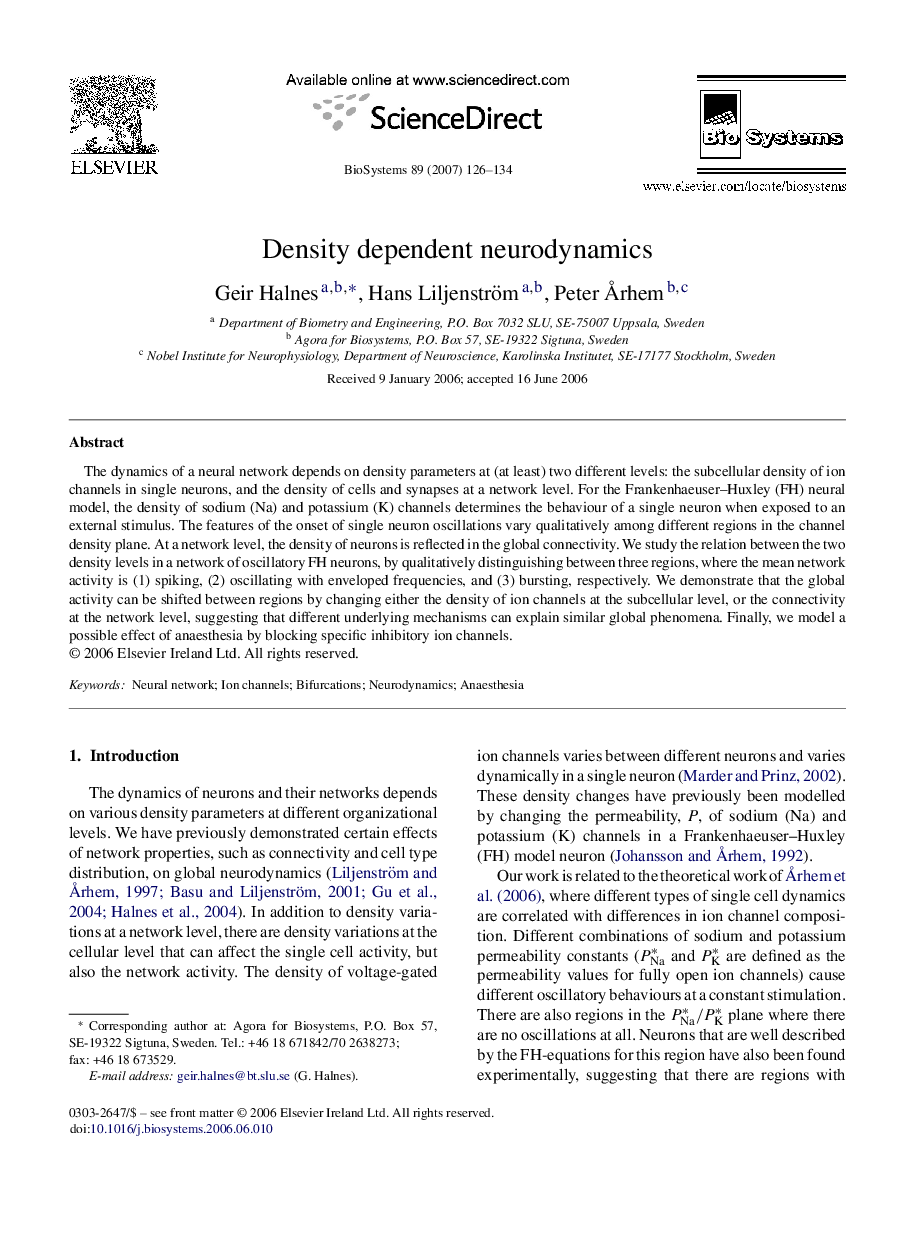| Article ID | Journal | Published Year | Pages | File Type |
|---|---|---|---|---|
| 2077149 | Biosystems | 2007 | 9 Pages |
Abstract
The dynamics of a neural network depends on density parameters at (at least) two different levels: the subcellular density of ion channels in single neurons, and the density of cells and synapses at a network level. For the Frankenhaeuser-Huxley (FH) neural model, the density of sodium (Na) and potassium (K) channels determines the behaviour of a single neuron when exposed to an external stimulus. The features of the onset of single neuron oscillations vary qualitatively among different regions in the channel density plane. At a network level, the density of neurons is reflected in the global connectivity. We study the relation between the two density levels in a network of oscillatory FH neurons, by qualitatively distinguishing between three regions, where the mean network activity is (1) spiking, (2) oscillating with enveloped frequencies, and (3) bursting, respectively. We demonstrate that the global activity can be shifted between regions by changing either the density of ion channels at the subcellular level, or the connectivity at the network level, suggesting that different underlying mechanisms can explain similar global phenomena. Finally, we model a possible effect of anaesthesia by blocking specific inhibitory ion channels.
Related Topics
Physical Sciences and Engineering
Mathematics
Modelling and Simulation
Authors
Geir Halnes, Hans Liljenström, Peter Ã
rhem,
